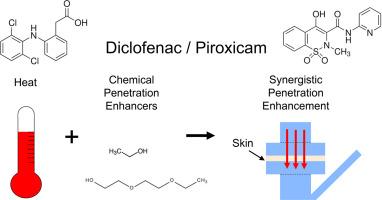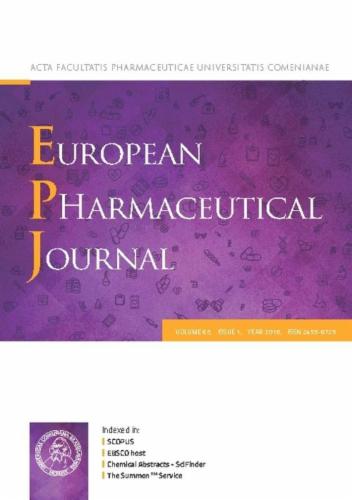Mechanistic insight into heat enhanced permeation of diclofenac and piroxicam in combination with chemical penetration enhancers across skin
IF 4.3
3区 医学
Q1 PHARMACOLOGY & PHARMACY
引用次数: 0
Abstract
The topical application of heat offers considerable potential for enhancing the delivery of non-steroidal anti-inflammatory drugs across the skin barrier. A better understanding of the mechanisms underpinning the improved skin permeation and how heat can be best used to work with complementary enhancement strategies would help to realise this potential. In this study the effect of heat on the permeation of diclofenac and piroxicam across different membranes, including human skin was investigated along with use of complementary enhancement strategies including selection of formulation pH, drug salt form and inclusion of chemical penetration enhancers. Heat alone improved drug delivery across human skin for both drugs, with larger increases for piroxicam. This increase was produced by improvements in drug release, molecular diffusivity and partitioning into the stratum corneum. In combination with chemical penetration enhancers, heat synergistically increased the skin permeation of diclofenac and piroxicam up to 13 and 40-fold respectively, with the increase in permeation being ascribed primarily to improvements in drug and enhancer partitioning into the stratum corneum. An Arrhenius plot of diclofenac permeation across skin was linear indicating that the orthorhombic to hexagonal stratum corneum lipid packing transition did not have a significant effect on skin permeation in response to heat.

双氯芬酸和吡罗昔康与化学渗透促进剂联合使用时皮肤热渗透增强的机理研究
局部加热为增强非甾体抗炎药物通过皮肤屏障的输送提供了巨大的潜力。更好地了解改善皮肤渗透性的机制,以及如何更好地利用热能与辅助增强策略相结合,将有助于实现这一潜力。本研究调查了加热对双氯芬酸和吡罗昔康在不同膜(包括人体皮肤)上渗透的影响,同时还采用了补充增强策略,包括选择制剂的 pH 值、药物盐形式和加入化学渗透增强剂。仅加热就能改善两种药物在人体皮肤上的给药,其中吡罗昔康的给药量增幅更大。这种增加是通过改善药物释放、分子扩散和在角质层中的分配产生的。与化学渗透促进剂结合使用时,热协同作用可使双氯芬酸和吡罗昔康的皮肤渗透率分别提高 13 倍和 40 倍,渗透率的提高主要归因于药物和促进剂在角质层中的分配得到改善。双氯芬酸在皮肤上的渗透率阿伦尼乌斯图呈线性,表明正交角质层脂质填料向六角角质层脂质填料的转变对皮肤在热作用下的渗透率没有显著影响。
本文章由计算机程序翻译,如有差异,请以英文原文为准。
求助全文
约1分钟内获得全文
求助全文
来源期刊
CiteScore
9.60
自引率
2.20%
发文量
248
审稿时长
50 days
期刊介绍:
The journal publishes research articles, review articles and scientific commentaries on all aspects of the pharmaceutical sciences with emphasis on conceptual novelty and scientific quality. The Editors welcome articles in this multidisciplinary field, with a focus on topics relevant for drug discovery and development.
More specifically, the Journal publishes reports on medicinal chemistry, pharmacology, drug absorption and metabolism, pharmacokinetics and pharmacodynamics, pharmaceutical and biomedical analysis, drug delivery (including gene delivery), drug targeting, pharmaceutical technology, pharmaceutical biotechnology and clinical drug evaluation. The journal will typically not give priority to manuscripts focusing primarily on organic synthesis, natural products, adaptation of analytical approaches, or discussions pertaining to drug policy making.
Scientific commentaries and review articles are generally by invitation only or by consent of the Editors. Proceedings of scientific meetings may be published as special issues or supplements to the Journal.

 求助内容:
求助内容: 应助结果提醒方式:
应助结果提醒方式:


